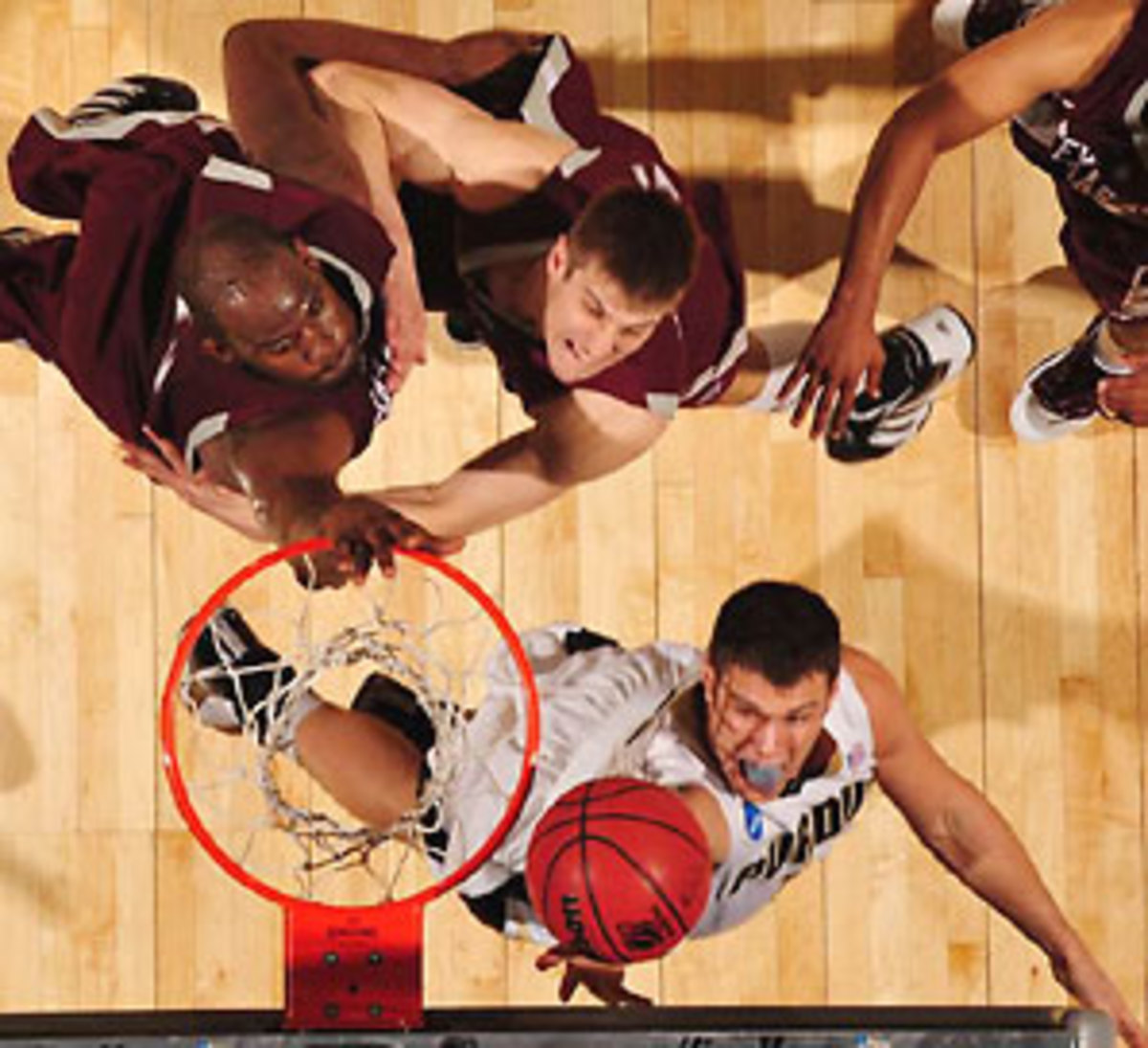Big Ten may not look pretty, but conference produces winners
Can I get a round of applause for the Big Ten, please? We'll do it the Midwestern way, firmly but respectfully, and, in true Midwestern style, we won't say anything negative about the overrated Big East, at least not until we've gone home and shut all the blinds. It's not for me to judge, Doris, but they certainly do seem mouthy over there.
The Big Ten is sending three teams to the Sweet 16, more than any other conference. And two of those teams did it without their best players.
On the same floor in Spokane, Wash., Purdue beat Texas A&M without Robbie Hummel, and Michigan State beat ACC co-champ Maryland without Kalin Lucas. Hummel and Lucas are two of the top three players in the league. (The third is Evan Turner of fellow Sweet 16 entrant Ohio State.)
That, right there, sums up Big Ten basketball. The conference keeps winning despite everything it is not.
The Big Ten does not have a program like North Carolina, which seems to get the first four picks in the recruiting draft every year. Indiana, the Big Ten's flagship program, has not dominated since the early '90s.
The Big Ten has not been the most talented league in the country for years. It is not the most fertile ground for the NBA. It does not even produce many NCAA champions -- the Big Ten has not won a national title since 2000.
But no conference produces so many consistently good, fundamentally sound teams. Big Ten regular-season basketball can be as ugly as Big Ten winters, but the physical play and defensive mindset prepare Big Ten teams for March.
Since 2002, four Big Ten teams (Indiana, Illinois, Ohio State and Michigan State) have made it to the championship game. Let's face it: we could whittle Pac-10 basketball down to the Pac-4 and most of the country wouldn't even notice.
The Big Ten still seems to have an image problem, though. Purdue is probably the best example of this. Under Gene Keady, the Boilermakers had an amazing ability to win while convincing everybody they didn't have any talent. They were like a Shakespeare play or a 15th-century tapestry -- you respected the genius but didn't enjoy looking at it. Even Purdue's uniforms look slow.
But this year's Boilermakers are different. JaJuan Johnson blocks shots that come from other corners of the bracket. Guard E'Twaun Moore is scoring even more than Hummel was. Chris Kramer is old-school Purdue, a defensive stopper who wears an arm brace and a scowl and appeared to be on the verge of fisticuffs for the entire first-round game against Siena. But Kramer is not the star.
The star is Hummel, which is why this Purdue team is a competitive tragedy. After all those years of overachieving in the regular season, then getting beaten by more athletic teams in the tournament, Purdue could finally match up with the best teams in the country. And with the Final Four in Indianapolis ... well, it was hard for Purdue fans not to think about destiny.
Then Hummel got hurt, and people started talking about the Boilermakers in the past tense even though they were still playing. They are unlikely to make the Final Four, just as Michigan State is unlikely to make it -- teams that lose their best player late in the season rarely make it to the last weekend.
But Ohio State still has the best player in the league, and probably the country, in Evan Turner.
And whatever happens, the Big Ten is likely to outshine the Big East.
(Wait, are the blinds closed? Good.)
After starting the tournament with a 1 seed, two 2s and two 3s, the Big East has two teams left.
Georgetown, the No. 3 seed in the Midwest, lost to 14th-seeded Ohio, which might have been the worst loss in the history of the tournament. I'm not exaggerating for effect here. The Bobcats went 7-9 in the Mid-American Conference. And they killed Georgetown. Almost every time that a 14 or 15 seed wins, the game comes down to the final minutes. Ohio smoked Georgetown from start to finish.
I probably should give the Big East more credit. Villanova, for example, pulled off the unprecedented feat of losing two games in one tournament. First the Wildcats went to overtime against 15th-seeded Robert Morris, where the officials bailed them out. Then 'Nova lost to Saint Mary's in the second round.
As you might have noticed, the East Coast has a tendency to fall in love with itself. And it's not that the Big East is a bad league. Some years, it's the best league in the country. But even then, the Big East manages to be overhyped. Last year, you might recall, the Big East was supposed to be the best league of in the history of the world. Most analysts seemed to agree that the committee should have given the Big East at least six No. 1 seeds. The league did send two teams (Connecticut and Villanova) to the Final Four, but Michigan State whipped the Big East's top two teams, Louisville and UConn. And, thanks to all that hype, even two teams in the Final Four seemed like a letdown.
The Big Ten, meanwhile, keeps chugging along. Purdue coach Matt Painter has blended Keady-like discipline with superior talent. Michigan State's Tom Izzo is the best tournament coach of his generation. And Ohio State's Thad Matta, dismissed as just a recruiter a few years back, has shown he is a heck of a coach.
The nation might not enjoy Big Ten basketball. But if you don't want to watch it, you better stop watching the tournament.






